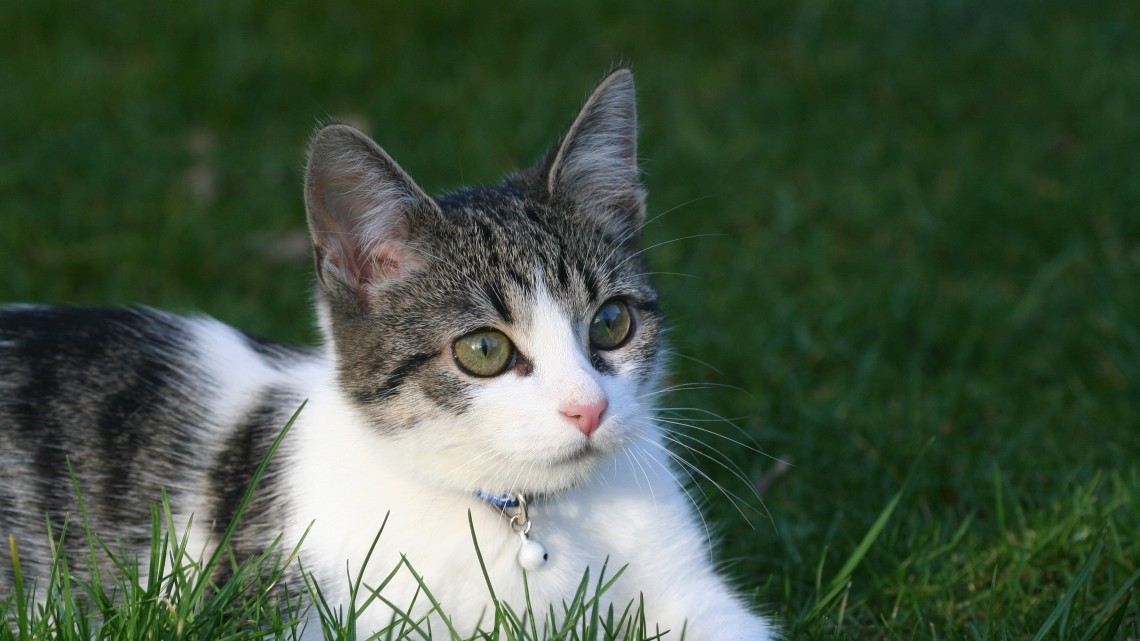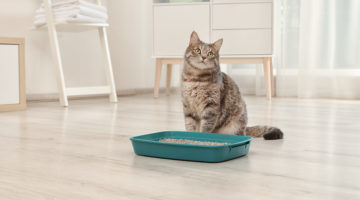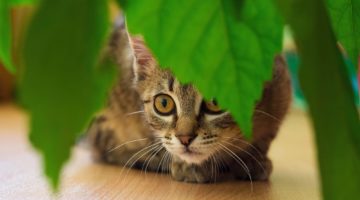Non-toxic alternatives are gaining in popularity in the battle against these nasty pests.
It’s summertime and the living may not be easy for your cat. Flea season is here, and despite a veritable army of products, many felines still spend the warm months scratching.
Cats that go outside, or who live with dogs that go out, have a greater likelihood of getting fleas. But indoor cats are not immune. Fleas and their eggs can be tracked in on shoes and clothing, or carried inside by other animals. In warmer climates, flea control can be a year-round challenge.
Even veterinarians are acknowledging that spot-ons such as FrontLine and Advantage are not totally effective and that their clients want products without a long list of warnings. Luckily, non-toxic choices are becoming more readily acceptable and available.
The whole picture
Solving a flea problem involves treatment on four fronts. By taking some precautions at the beginning of flea season, you can avoid a full-blown infestation.
1Start outside
Regardless of climate, start outside and work your way in. Year-round vigilance is required in warmer climates, although hot northern summers can also be a challenge.
Beneficial nematodes are microscopic worms and natural predators of fleas. They’re purchased freeze-dried from companies such as Fleabusters or Gardens Alive, and applied via a garden hose in moist, shady spots around your house.
Diatomaceous earth (DE), a dessicant that works by penetrating the shell of the flea and drying it out, can also be used outside. It’s sprinkled around the foundations of the house and must be reapplied after rains. The dust should not be inhaled. Food grade DE is the only ingredient in PermaGuard from The Holistic Horse.
Natural Chemistry makes a Yard and Kennel Spray that contains natural botanicals, such as cinnamon oil, cedar oil, clove oil and vanilla to control fleas. According to vice president Vince Hourihan, the product is manufactured in safe concentrations for cats. The spray can be used on lawns, trees, outside surfaces and shrubs.
2For your cat
For some felines, fleas are more than an annoyance; they can be downright torture. A single flea can result in excessive scratching, hair loss and scabs for an allergic cat. The allergic response is triggered by the flea’s saliva, which causes the cat’s immune system to kick into over- drive. For these poor kitties, good flea control is vital.
- A good diet is important to overall health, and especially important in building resistance to parasites. A cat with a weakened immune system is not going to be able to fight disease, let alone an infestation of fleas, and is also more prone to developing allergies. Dry flaky skin or hot spots are open invitations for the bloodsuckers.
- A teaspoon of brewer’s yeast can be added to your cat’s food (some cats may be allergic, so be cautious). It’s a good source of thiamine, a B vitamin that produces a taste and odor fleas find unattractive. Check with a holistic or integrative veteri-narian before giving your cat any new supplements.
- Your best defense against fleas is a flea comb. Used regularly before fleas are entrenched in your household, this fine-toothed comb is a great way to maintain control. Dip the comb in a bowl of soapy water to kill the fleas as you work through the fur. Be sure to use a gentle, non-toxic soap that won’t irritate your cat’s skin or harm him if he licks it. A bath will immediately drown out a good number of fleas – that is, if your feline is accommodating.
- A bowl of soapy water placed under a night light near your cat’s bedding is an easy way to trap fleas. The fleas are attracted to the warm light and will drown. While it won’t kill the eggs, it’s a good way to control the adults.
- Hydrosols are the by-products of essential oils, distilled from plant matter. It’s important to know that neat essential oils are toxic to cats since they cannot be metabolized. Hydrosols are a safe alternative. A lavender hydrosol can be spritzed on irritated skin while a citrus-based one may repel fleas.
- For more heavy-duty treatment, consider non-toxic powders such as FleaGuard for Cats and Dogs and ParaSpray from The Holistic Horse. ParaSpray is an organic product containing extracts of plant surfactants that dehydrate the parasite. Best Yet from Cedar Oil Industries, meanwhile, is a flea control solution based on juniperus Virginia, which mimics the cedars of Lebanon. According to Robert Amarine, it’s as repellent to insects as ammonia is to us, and they evacuate the area. He says cedar oil is also a natural bacteriacide and that it is safe for cats, adding that he has used it successfully on his own cats for years.
Around the house
Going beyond Felix himself, it’s vital to regularly wash bedding (yours and his) and vacuum carpets and uphol- stery thoroughly. It goes without saying that all indoor surfaces need to be treated and vacuumed and the bag discarded immediately, outdoors.
Fleabusters has been in the business of fighting fleas since the 1980s. Their signature product, Fleabusters Rx for Fleas Plus Flea Powder, is made from sodium polyborate, a fine, long-lasting powder used on carpets, baseboards, furniture and area rugs. It’s a matter of “meet, greet and kill,” says president Robert Yarmuth. As with DE, the dust should not be inhaled. Borax-based products are also often recommended for use on carpets. They’re brushed in then vacuumed, and the residue acts to kill flea larvae.
We need all the help we can get in creating a greener lifestyle for ourselves and our cats. Moving toward less toxic flea control is a step in the right direction.







No Comment